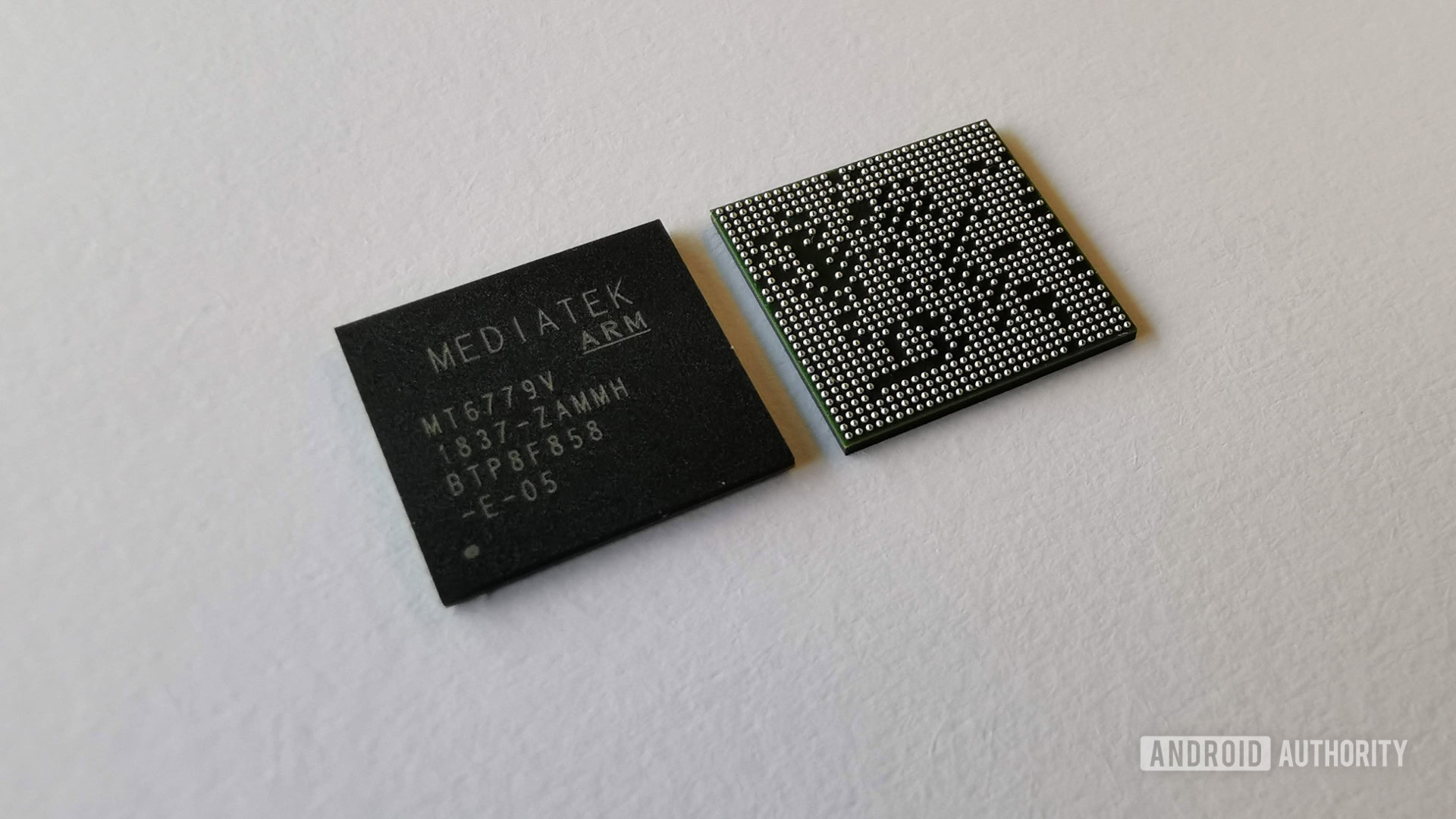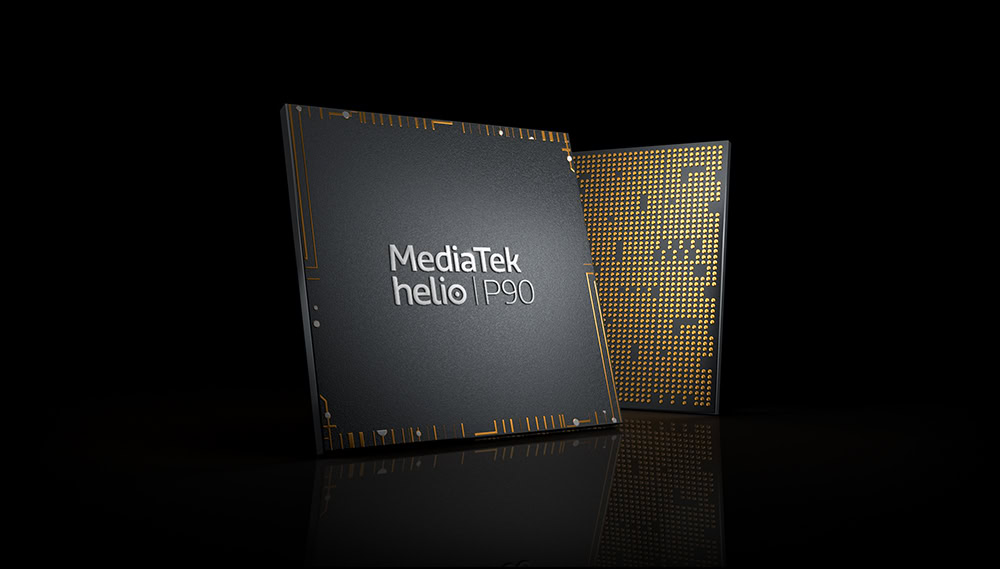Affiliate links on Android Authority may earn us a commission. Learn more.
MediaTek Helio P90 announced: We know about the AI boost, but what else?

We were able to get a preview of the Helio P90’s AI capabilities last month, and now, MediaTek has fully peeled the curtain back on the new chipset. So what else is there to know about the company’s latest processor?
If anything, the Helio P60 and P70’s biggest weakness was the use of legacy Arm Cortex CPU cores. Fortunately, the Helio P90 represents the brand’s first stab at using new-generation DynamIQ CPU cores. We see two Cortex-A75 cores for heavy lifting and six Cortex-A55 cores for lighter tasks.
The Cortex-A75 isn’t Arm’s latest heavyweight core, as the Cortex-A76 has already been adopted by the likes of HUAWEI. Nevertheless, it should make for a solid single-core boost in some ways over the Helio P60 and P70. The company told Android Authority that its next chip will indeed make use of the Cortex-A76 core.
The switch from four heavy cores to two might not be ideal for apps that require multiple powerful threads (e.g. technically advanced games). But for the vast majority of apps that either require one powerful thread or multiple smaller threads, we should still see some noteworthy gains. In fact, Qualcomm made a similar jump from the 4+4 Snapdragon 660 to the 2+6 Snapdragon 670, and it claims a CPU boost of 15 percent over the older chip.
In terms of graphical capabilities, MediaTek has opted for Imagination Technologies’ IMG 9XM-HP8 GPU. The Taiwanese chipmaker is claiming a graphical boost of over 50 percent compared to the Mali-G72 MP3 used in the Helio P60, Helio P70, and Samsung’s mid-range Exynos 9610.
The company even touted 30fps in the GFXBench Manhattan test. By comparison, the Snapdragon 660-toting Xiaomi Mi A2 and vivo V11 Pro hit 14fps and 12fps respectively, while the Helio P60-equipped OPPO A3 hits 11fps. It sounds like a massive leap in performance, but we’ll need to wait for real-world devices to actually put this to the test.
What about AI power?

We’ve already covered the P90’s extensive AI capabilities, but it bears repeating that it looks like a big jump over the firm’s previous AI silicon. We’ve got a similar APU to the company’s earlier efforts, but the company has increased the clock speed to 624Mhz (from 525Mhz). But the biggest boost is due to a new bit of hardware called the AI Accelerator, which looks poised to deliver the lion’s share of machine learning power.
MediaTek claims that the Helio P90 features 1,127 GMACs of AI computing power compared to the Snapdragon 710’s 614 GMACs and the Helio P60’s 280 GMACs. In plain English, that means we should expect a ton more power but at twice the efficiency of the company’s previous chips.
The company is using this power for features like better beautification, improved automatic exposure, real-time photo/video enhancements, multiple object recognition and AI noise reduction.
The Helio P90 also sports another bit of AI silicon, dubbed the Face Detection Engine. This will allow the phone to identify faces more quickly, which should make for faster focusing and scene recognition.
| MediaTek Helio P90 | MediaTek Helio P70 | MediaTek Helio P60 | |
|---|---|---|---|
CPU | MediaTek Helio P90 2x Cortex-A75 at 2.2 Ghz 6x Cortex-A55 at 2.0 Ghz | MediaTek Helio P70 4x Cortex-A73 at 2.1 GHz 4x Cortex-A53 at 2.0 GHz | MediaTek Helio P60 4x Cortex-A73 at 2.0 GHz 4x Cortex-A53 at 2.0 GHz |
GPU | MediaTek Helio P90 IMG 9XM-HP8 | MediaTek Helio P70 Mali-G72 MP3 at 900 MHz | MediaTek Helio P60 Mali-G72 MP3 at 800 MHz |
AI | MediaTek Helio P90 APU at 624 Mhz AI Accelerator | MediaTek Helio P70 APU at 525 Mhz | MediaTek Helio P60 APU at 525 Mhz |
Camera | MediaTek Helio P90 25MP + 16MP dual or 48MP single | MediaTek Helio P70 24 + 16 MP dual or 32 MP single | MediaTek Helio P60 20 + 16 MP dual or 32 MP single |
Manufacturing process | MediaTek Helio P90 12nm | MediaTek Helio P70 12nm | MediaTek Helio P60 12nm |
It’s clear MediaTek is targeting Qualcomm’s Snapdragon 710 series, as the Taiwanese chipmaker compared its new chip to the Snapdragon 710 in the AI stakes. The Helio P90 adopts a similar CPU layout (two plus six) too. If the new chipset can deliver a similar or better level of performance than Qualcomm’s upper mid-range SoC, then we might be in for a fight at the upper mid-range price bracket.
But Qualcomm has clearly been upping its game in the low-end and mid-range bracket over the past couple of months. The Snapdragon 670 and 710 are both built on a 10nm process compared to MediaTek’s slightly larger 12nm process for its 2018 chips (and the Helio P90). This means, if all things are equal, we should see better battery life from Qualcomm’s chips in theory. The U.S. company has also aped MediaTek’s Helio A22 and P22 in bringing Bluetooth 5 and the 12nm manufacturing process to its low-end chips, such as the Snapdragon 429 and 439.
The Helio P90 is expected to appear in phones in the first half of 2019. MediaTek also confirmed that it was in talks with a U.S. mobile brand about using the P90, but negotiations were still ongoing at the time.